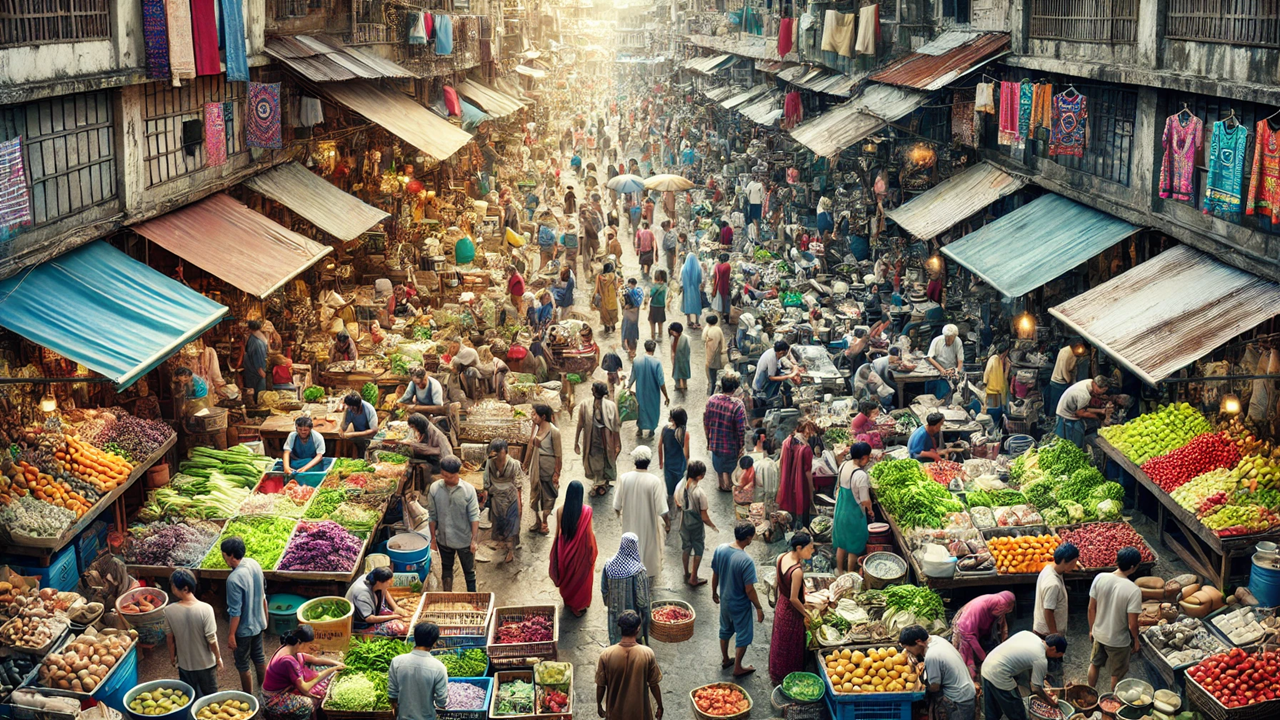Diverse Growth Rates Highlight Economic Disparities in Global Recovery
The UNDP report "Multi-speed growth is back with a fiscal blind spot" highlights significant disparities in post-pandemic economic recovery, with developing economies showing higher growth rates compared to advanced economies. Despite some progress, poverty reduction remains a significant challenge due to high debt levels and weak development financing. The report underscores the need for inclusive and sustainable growth strategies to achieve the Sustainable Development Goals by 2030.

After four years of synchronized economic growth, the world is witnessing a return to a multi-speed growth pattern, with stark differences in recovery rates between developing and advanced economies. According to a recent report by the United Nations Development Programme (UNDP) titled "Multi-speed growth is back with a fiscal blind spot," by George Gray Molina and Eduardo Ortiz-Juarez, these disparities are becoming increasingly evident.
Uneven Economic Growth Rates Emerge Post-Pandemic
The report reveals that while 68 developing economies are growing at a rate exceeding 4%, another 47 are growing between 2% and 4%, and 37 are growing at less than 2%. In stark contrast, most advanced economies remain in a state of mitigation, with growth rates averaging only 1.1%. This significant divergence underscores the varying speeds at which countries are recovering from the pandemic-induced economic downturn.
This multi-speed recovery is not just a statistical anomaly but has profound implications for global poverty reduction efforts. Despite some progress, the report predicts that by 2024, 7.7% of the global population could still be living in extreme poverty, defined as surviving on less than $2.15 a day. This figure is only a slight improvement from the pre-pandemic level of 8% and is expected to decrease marginally to 7.2% by 2026.
Persistent Poverty Amid Economic Growth
A deeper dive into the numbers reveals a troubling trend. While economic growth is returning, it is not translating effectively into poverty reduction. In 2024, an additional 13.1% of the world’s population will be living on $2.15 to $3.65 a day, with 23.5% surviving on $3.65 to $6.85 a day. By 2026, these figures are projected to improve slightly to 18.9% and 42.5%, respectively. However, these improvements are modest at best and indicate that economic gains are not reaching the most vulnerable populations.
The report highlights that South Asia and Sub-Saharan Africa are expected to see notable reductions in poverty due to robust economic growth. South Asia, for instance, is forecasted to reduce poverty by 2 percentage points, and Sub-Saharan Africa by 1.91 percentage points by 2026. However, other regions will see more modest reductions, highlighting the uneven distribution of economic benefits.
Fiscal and Financial Challenges
High levels of debt and weak development financing are significant barriers to achieving more equitable growth. The report indicates that in 49 countries, net interest payments as a share of revenue now exceed 10%, up from 27 countries a decade ago. In 10 countries, these payments are higher than 25%. This is particularly concerning for Sub-Saharan Africa, which accounts for 45% of the countries with interest payments over 10% and 50% of those with payments exceeding 25%.
These high debt burdens are compounded by depreciating currencies, higher interest rates, and lower growth rates, making it difficult for countries to invest in essential areas such as health, education, infrastructure, and poverty reduction. Without substantial international assistance in terms of liquidity, debt relief, and access to long-term affordable finance, many developing economies will continue to struggle.
Geopolitical and Geoeconomic Fragmentation
The report also points to the influence of geopolitical and geoeconomic fragmentation on global economic patterns. This fragmentation affects policy effectiveness and international cooperation, further exacerbating the challenges faced by developing economies. The need for inclusive and sustainable growth strategies is more urgent than ever to address these issues and achieve the Sustainable Development Goals (SDGs) by 2030.
The Path Forward
The findings of the UNDP report underscore the critical need for targeted and effective policy measures to foster inclusive and sustainable economic growth. As the world navigates the post-pandemic recovery, it is crucial to focus on overcoming fiscal and financial constraints, enhancing international cooperation, and ensuring that economic gains reach the most vulnerable populations.
The default trajectory of growth and poverty reduction projected for 2024–2026 highlights significant disparities and challenges. There is an urgent need for inclusive and sustainable growth strategies, improved fiscal and financial flows, and stronger international cooperation to address these challenges and achieve the 2030 Agenda.
- FIRST PUBLISHED IN:
- Devdiscourse
ALSO READ
Greece Completes National Bank Stake Sale Amid Economic Recovery Signs
Strengthening Ties: India Assures Support for Sri Lanka’s Economic Recovery
Restructuring Triumph: Sri Lanka's Path to Economic Recovery
Maldives and India Strengthen Strategic Ties Amid Economic Recovery
Sri Lanka and World Bank Sign $200M Agreement to Bolster Economic Recovery and Resilience










